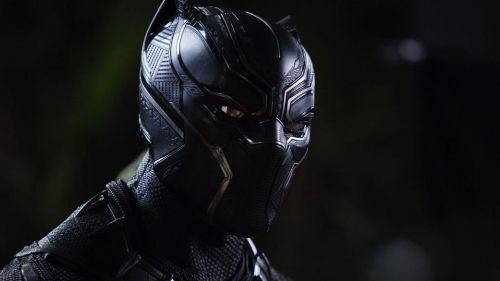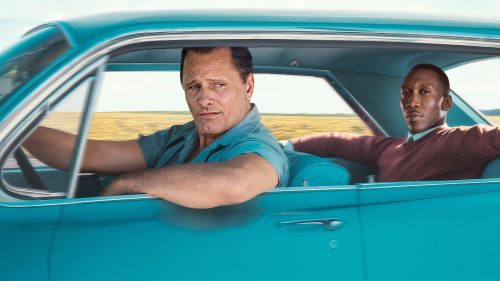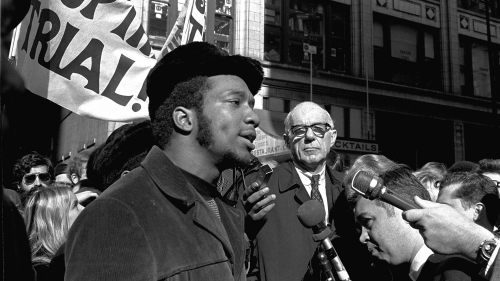Ryan Coogler’s CREED And Its Images Of Blackness
Black Panther is almost here! Get your tickets now!
In a Hollywood cinema landscape that still mostly revolves around white hegemony, Ryan Coogler’s Creed was a huge breath of fresh air, a motivational, moving film about a black man that didn’t involve poverty or gangs. Black Panther, his upcoming contribution to Marvel Studios’s ‘Cinematic Universe’ is about to break up those films in a similar fashion, shifting focus from dudes named Chris to a man named T’Challa, who rules over an afro-futurist paradise hidden in the heart of Africa. It looks to be the most overtly black Hollywood film in years, but Coogler’s last film is about blackness in a somewhat quieter, more subversive fashion.
Films by white filmmakers like Detroit, and more recently, the hotly contested Three Billboards Outside Ebbing Missouri, have the habit of only treating the bodies of black people as miserable and/or broken things. Even with the best intentions motivating the creation of these movies, they often forget to include the voices of black people in the process, and the films lose nuance because of it. A lot of Creed’s value comes from how it goes in the completely opposite direction - for starters, the lead character’s name is Adonis - the archetype of the handsome youth (what a prophetic name his mother gave him). The first time we see the adult Adonis Creed, he’s shirtless, and preparing for a quick fight. After, a smash cut to his office job swiftly establishes Coogler’s aim to make this a different kind of Rocky/underdog story.
Rather than seeking easy pathos with yet another black kid coming from poverty, Creed’s backstory is quite the opposite. Outside of our brief look at one of Adonis’s stints in juvenile detention, we see that he had a comfortable, wealthy upbringing with his father’s wife. We know he has an education, and even an office job - what drives him to fight is ambition and a desire to live up to his father’s legacy.
While the film mostly touches on themes of legacy for both its title character and for his coach Rocky, one of the film’s most striking elements is its casual inclusion of things specific to people of colour, and how it celebrates people of colour expressing themselves. A lot of the film’s most uplifting moments are found between the lines, in images of the main characters and the environment around them. This is particularly true of Tessa Thompson’s character Bianca - a singer and beat maker who, in a sadly ironic twist of fate, is slowly losing her hearing.
Bianca and Adonis eventually become an item, and this is where the film’s focus around images of blackness reveals itself. In the first scene of intimacy between Adonis and Bianca, instead of just focusing on the bodies of the two (beautiful people), Maryse Alberti’s camera lingers on Biana’s long, extravagant braids - hair which often can inspire sideways looks from people. In a later scene, we see Adonis casually helping Bianca to fix her braids. It can’t be overstated how important hair is for black and mixed race people; frizzy hair is something that sets us apart from other children and adults - there have been many disputes over ‘work appropriate’ black hair; there’s the ever-present annoyance of white people wanting to touch it or police it - so the shots of Bianca’s hair aren’t insignificant. It’s an experience that is unique to people of colour, and the film’s casual presentation of that within the plot is a hugely positive example of representation in a Hollywood movie. It’s a perfect mix of a story that’s universal, that of the underdog/sports hero movie, and experiences specific to a demographic that is still somewhat underrepresented.
Other images also stress the importance of representation - a touching shot early on sees Adonis blow up a video of Apollo Creed fighting on a big screen, then virtually inserting himself into his shoes as he shadow boxes in sync with his father. As said in a fictional HBO Sports broadcast during the film, ’people find hope in the tales of their heroes’ - this one happens to be his dad.
In this regard, legends that have come out of Philadelphia are referenced both by dialogue from the characters within the film, and within the soundtrack.The most notable needle drop occurs when Creed arrives in the city, a quick montage unfolding to 'The Fire’ by John Legend and The Roots - not just a great song about ambition and drive, but also by Philly’s local boys done good.
There are films that depict violence against black bodies with nuance, but this shouldn’t be the beginning and end of representation. There have to be things like Blade to go with our Mudbounds, and this balance is more likely to happen when more black filmmakers can have control of their narratives. Creed recognises the simple, visceral pleasures of blockbuster film combined with more intimate looks at the lives of people of colour in the US, without the lens of racism.
Creed is a best case example of diversity in Hollywood. While the story essentially has the basic frame of an underdog sports film - more specifically, a Rocky film that we’ve seen before - it fills the cracks with these snippets of black culture and images of blackness. It’s proof that these stories are universal, and that cinema can be diverse without just focusing on misery. Filmmakers like Coogler, DuVernay (with A Wrinkle in Time) and Barry Jenkins (with the news that he's doing a genre film with Boseman) are tapping into this, and the Hollywood landscape has never looked more exciting.



